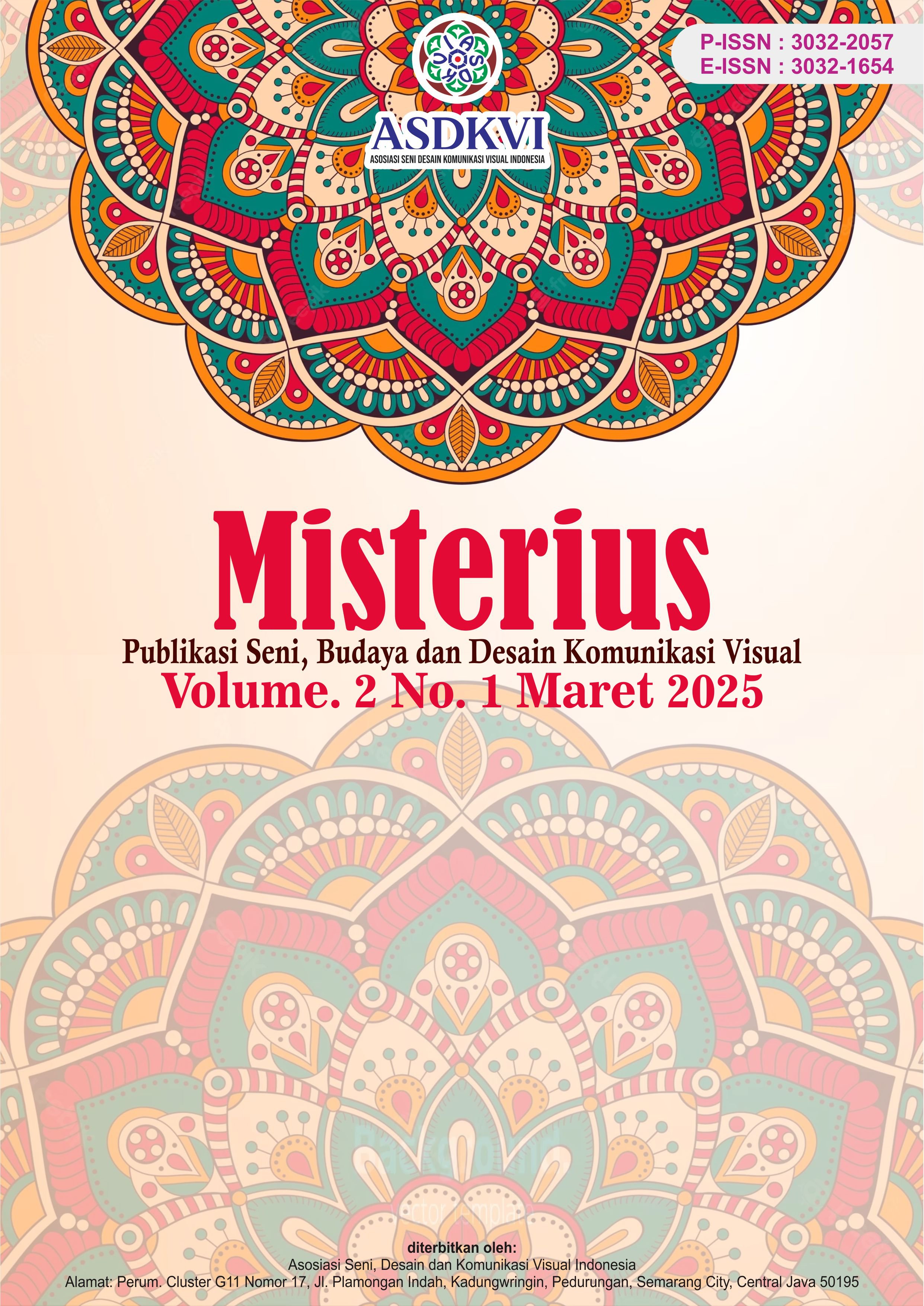Eksistensi Angklung Buncis Sawargi di Desa Manggungjaya Kecamatan Rajapolah Kabupaten Tasikmalaya
DOI:
https://doi.org/10.62383/misterius.v2i1.497Keywords:
Angklung Buncis, Art Innovation, Cultural Heritage Preservation, Cultural Identity, Traditional ArtAbstract
Angklung Buncis Sawargi is one of the high-value traditional Sundanese cultural heritages in Manggungjaya Village, Rajapolah District, Tasikmalaya Regency. This study aims to analyze the existence of Angklung Buncis Sawargi amidst the social and cultural changes of the local community. This research uses a qualitative method with a descriptive approach, through observation, in-depth interviews, and documentation. The study finds that the existence of this art form is still preserved due to the support of the local community, the participation of younger generations, and innovations in performances, such as the integration of traditional and modern music elements. Additionally, the role of art groups like Angklung Buncis Sawargi in various traditional events, entertainment, and education plays a crucial part in maintaining the continuity of this art. The implications of this research highlight the importance of collaboration between the government, art communities, and the public in preserving traditional art as local cultural identity, while also encouraging its development to remain relevant in the modern era. This preservation effort is expected to make Angklung Buncis not only locally recognized but also nationally acknowledged as a cultural heritage.
References
Andri, L. R. M. (2016). Seni pertunjukan tradisional di persimpangan zaman: Studi kasus kesenian Menak Koncer Sumowono Semarang. Humanika, 23(2), 1412-9418.
Astuti, D. (2020). Sejarah angklung, alat musik yang diakui dunia. Goad News From Indonesia. Retrieved from https://www.goadnewsfromindonesia.id
Gulo, W. (2012). Metode penelitian. Jakarta: Gramedia Widiasarana Indonesia.
Gunawan, P., Syai, A., & Fitri, A. (2016). Eksistensi tari Likok Pulo di Pulau Aceh Kabupaten Aceh Besar. Kuala, 1(4), 279-286.
Instruksi Presiden Republik Indonesia Nomor 16 Tahun 2005 tentang Kebijakan Pembangunan Kebudayaan dan Pariwisata.
Khutniah, N., & Iryani, V. E. (2012). Upaya mempertahankan eksistensi tari Kridha Jati di Sanggar Hayu Budaya Kelurahan Pengkol Jepara. Jurnal Seni Tari Unnes, Juni 2012, 2252-6625. Retrieved from http://journal.unnes.ac.id/sju/index.php/jst
Moleong, L. J. (2012). Metode penelitian kualitatif. Bandung: PT Remaja Rosdakarya.
Moleong, L. J. (2015). Metode penelitian kualitatif. Bandung: PT Remaja Rosdakarya.
Monika, I. (2011). Kebijakan pemerintah daerah dalam pelestarian kesenian tradisional di Kota Makassar. Jurnal Ilmu Pemerintahan, Juli 2011, 1979-5645.
Rosyadi. (2012). Angklung, dari angklung tradisional ke angklung modern. Patanjala, 4(1), 26-40.
Rosyadi. (2015). Menelusuri asal usul dan perkembangan kesenian Jaipong. Patrawidya, 17(2), 1-15.
Save, M. D. (1990). Filsafat eksistensi. Jakarta: Rineka Cipta.
Sugiyono. (2007). Memahami penelitian kualitatif. Bandung: Alfabeta.
Downloads
Published
How to Cite
Issue
Section
License
Copyright (c) 2025 Misterius : Publikasi Ilmu Seni dan Desain Komunikasi Visual.

This work is licensed under a Creative Commons Attribution-ShareAlike 4.0 International License.





